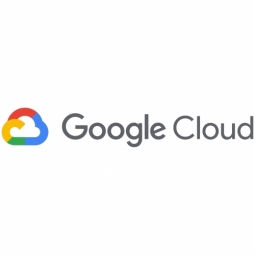Technology Category
- Analytics & Modeling - Machine Learning
- Infrastructure as a Service (IaaS) - Cloud Computing
Applicable Industries
- Education
- Equipment & Machinery
Applicable Functions
- Sales & Marketing
Use Cases
- Predictive Maintenance
- Traffic Monitoring
Services
- Cloud Planning, Design & Implementation Services
- Training
About The Customer
Arpeely is a data science startup based in Israel that uses machine learning and feature engineering to discover hidden opportunities in online advertising. The company processes dozens of billions of predictions daily and cherry-picks traffic based on in-app or post-conversion behavior KPIs. Arpeely is connected to the world’s largest advertising exchanges and achieved multimillion-dollar revenues in its first year of trading. By now, every single user in the U.S. has passed through Arpeely’s servers at some point, and it processes 20 billion ad impressions a day, while delivering millisecond predictions per ad view.
The Challenge
Arpeely, an Israeli ad-tech startup, aimed to revolutionize the media-buying process by leveraging machine learning and feature engineering techniques. The company sought to process billions of ad impressions daily and cherry-pick traffic based on in-app or post-conversion behavior KPIs. However, as a bootstrapped startup launched in 2017, Arpeely faced the challenge of managing global ad operations with a small team. The company needed a solution that would allow it to scale up quickly without having to invest heavily in developing complex services or expanding its team.
The Solution
Arpeely turned to Google Cloud to launch and scale its innovative ad-tech platform. Google Cloud provided the necessary tools and support for Arpeely to build and scale its operations, leveraging compute, data, and machine learning solutions. Arpeely started with App Engine, which allowed it to quickly iterate in the early days. As volumes scaled up, Arpeely moved on to the fully managed Google Kubernetes Engine (GKE) and BigQuery. BigQuery became the heart of Arpeely’s data warehouse, aggregating all its analytics, business metrics, and third-party integrations. The system automatically scaled up to deploy several hundred nodes as demand grew. Meanwhile, AutoML scaled the training of the machine learning models that Arpeely created, allowing it to continually fine-tune its bidding systems.
Operational Impact
Quantitative Benefit

Case Study missing?
Start adding your own!
Register with your work email and create a new case study profile for your business.
Related Case Studies.

Case Study
Smart Water Filtration Systems
Before working with Ayla Networks, Ozner was already using cloud connectivity to identify and solve water-filtration system malfunctions as well as to monitor filter cartridges for replacements.But, in June 2015, Ozner executives talked with Ayla about how the company might further improve its water systems with IoT technology. They liked what they heard from Ayla, but the executives needed to be sure that Ayla’s Agile IoT Platform provided the security and reliability Ozner required.

Case Study
IoT enabled Fleet Management with MindSphere
In view of growing competition, Gämmerler had a strong need to remain competitive via process optimization, reliability and gentle handling of printed products, even at highest press speeds. In addition, a digitalization initiative also included developing a key differentiation via data-driven services offers.

Case Study
Predictive Maintenance for Industrial Chillers
For global leaders in the industrial chiller manufacturing, reliability of the entire production process is of the utmost importance. Chillers are refrigeration systems that produce ice water to provide cooling for a process or industrial application. One of those leaders sought a way to respond to asset performance issues, even before they occur. The intelligence to guarantee maximum reliability of cooling devices is embedded (pre-alarming). A pre-alarming phase means that the cooling device still works, but symptoms may appear, telling manufacturers that a failure is likely to occur in the near future. Chillers who are not internet connected at that moment, provide little insight in this pre-alarming phase.

Case Study
Premium Appliance Producer Innovates with Internet of Everything
Sub-Zero faced the largest product launch in the company’s history:It wanted to launch 60 new products as scheduled while simultaneously opening a new “greenfield” production facility, yet still adhering to stringent quality requirements and manage issues from new supply-chain partners. A the same time, it wanted to increase staff productivity time and collaboration while reducing travel and costs.

Case Study
Integration of PLC with IoT for Bosch Rexroth
The application arises from the need to monitor and anticipate the problems of one or more machines managed by a PLC. These problems, often resulting from the accumulation over time of small discrepancies, require, when they occur, ex post technical operations maintenance.

Case Study
Data Gathering Solution for Joy Global
Joy Global's existing business processes required customers to work through an unstable legacy system to collect mass volumes of data. With inadequate processes and tools, field level analytics were not sufficient to properly inform business decisions.







